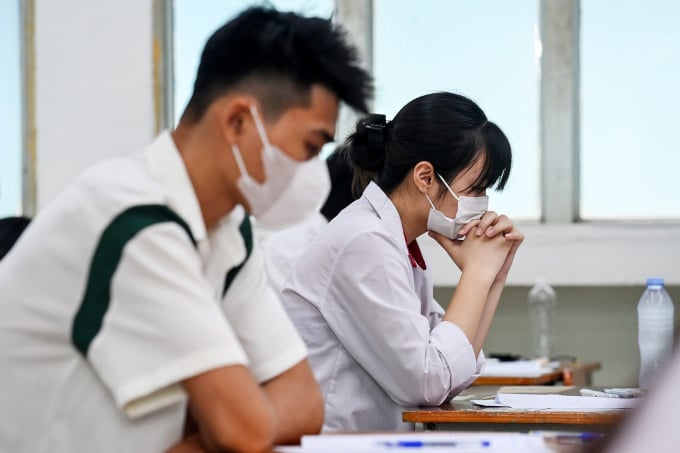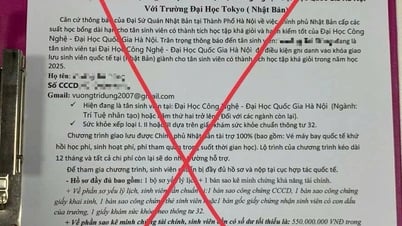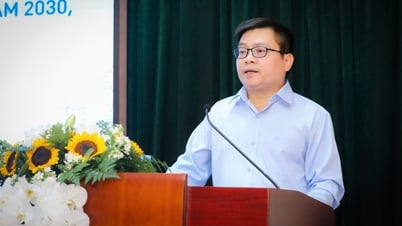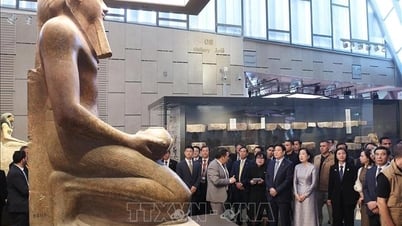Each student spends 4-5 million a month, a university with 30,000 students can earn thousands of billions of dong from services, much more than tuition fees, but has not been exploited.
That is the opinion of Mr. Do Van Dung, former Principal of Ho Chi Minh City University of Technical Education. The following is his article:
According to a survey by a group of World Bank experts, tuition fees account for 77% of university revenue in 2021. This is a worrying number. Relying heavily on student tuition fees makes schools seek to increase enrollment, accept sacrificing training quality, and at the same time create inequality in society when the opportunity to enter university is increasingly narrow for poor students.
In the long run, this affects regional development due to the misallocation of human resources. Most of the top universities with high tuition fees are only for the children of the rich in big cities. Remote areas lack human resources for development.
In addition to tuition fees, university revenues can come from research results, technology transfer; sponsorship, donations; service revenue, business, investment and budget. But in reality, universities in Vietnam do not generate any significant sources of income other than student tuition fees.
Currently, the results obtained from research and technology transfer of schools are too poor. The main reason is that schools do not invest and focus on scientific research purposes. The main workload of lecturers and experts at universities is still teaching. There is no time, mind, and energy for scientific research, not to mention effective research. Many schools have policies to encourage lecturers to do scientific research like a drop in the ocean, not substantial and creating breakthroughs.
On the other hand, to meet research needs, schools must invest in modern laboratories. The lack of funding forces schools to take funding from tuition fees, so investment is sporadic. When research is ineffective, schools cannot sell their research results and certainly businesses and society will not place orders. If teaching hours for lecturers are reduced, schools are forced to hire more people, increasing costs. This problem goes into a vicious circle with no way out and will be deadlocked for decades until businesses proactively combine research or place orders.
Meanwhile, the culture of sponsorship and donation for universities in Vietnam is not strong enough. In the US and some developed countries, funding and donation is a large source of money for universities. For famous schools such as Harvard, Yale and Princeton, 1/3 of the operating budget comes from this source. Universities in the US put them into a separate fund and have a mechanism for investment and profitable business.
In Vietnam, only Fulbright University received a large amount of money - 40 million USD from 8 businessmen in Vietnam. Other schools also received sponsorship from alumni and businesses, but mainly in the form of scholarships and practice equipment, not large enough to be considered a source of income for the university. With no other choice, school leaders must proactively connect and ask for sponsorship from businesses - the units that benefit from the training results of the school - with the spirit of "as much as possible".
Thus, two sources of income that are very popular with universities around the world are very difficult to exploit in Vietnam.
However, in my opinion, a very large source of income, which can double or triple student tuition fees, that no university in Vietnam has been able to exploit, is student food, accommodation and living services.
Each student who goes to the city to study spends an average of 4-5 million per month. A university with a student population of about 30,000 earns 1,500 billion VND per year from this service. If we add the sale, repair of cars, laptops and other accompanying utility services, this revenue can reach 2,000 billion VND per year. Currently, universities can only exploit a very small "piece of the cake" mentioned above, which is the cafeteria and parking services on campus, while the rest of the people around the school benefit from this market. Barriers from facilities, operating staff, business mechanisms and accompanying risks make schools "ignore" this market.
Do a quick calculation, if the average tuition fee of a student is 25 million per year, the total revenue from tuition fees of a university of 30,000 students is about 750 billion. Thus, the revenue from student services is almost three times the tuition fee. Adding other small sources of income, the school has about 2,900 billion VND.
The cost of paying salaries to staff and lecturers is about 500 billion, operating and investing in facilities is about 400 billion and an additional 100 billion for other costs such as scientific research and student support. After deducting expenses, a university of this size will make a profit of about 1,900 billion, or 65%. Not to mention that if saving on electricity, water, trees, and environmental sanitation costs, the school will also have an additional ten billion each year.

Candidates taking the high school graduation exam in Hanoi , June 28. Photo: Giang Huy
Many opinions demand that the State budget should support higher education more through research and service orders, but I think the opposite. On the one hand, schools demand autonomy, but on the other hand, they still want the State to support the budget, which is somewhat contradictory. Universities must find ways to mobilize, they cannot depend on the "mother's milk" of the budget and tuition fees.
Vietnam's birth rate is getting lower and lower, and the number of students entering university each year will gradually decrease. Coupled with the emergence of AI, job opportunities will be fewer, and recruiting difficulties will happen in the near future. If universities do not actively develop other sources of income and rely only on tuition fees, they will fall into recession in the long run.
The government needs to have a more open mechanism, allowing schools to do business and invest in addition to training and scientific research. Only then can schools manage, expand their revenue sources, and maintain a 50% dependence on tuition fees, which is ideal.
Associate Professor, Dr. Do Van Dung , former Principal of Ho Chi Minh City University of Technical Education
Source link



































































































Comment (0)